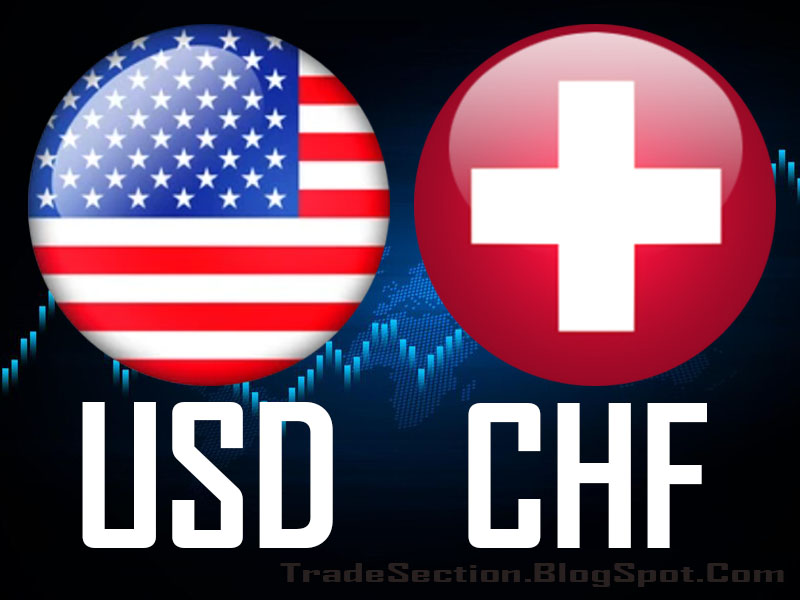📊 Market Overview: USDCHF Forms Strong Bearish Setup
Fundamental Outlook for USDCHF
Recent developments in the USDCHF forex pair highlight a critical shift in market dynamics as the July rally stalls at the pivotal blue box level. Since January 2025, the Canadian dollar has remained under pressure, with USDCHF consolidating its bearish trajectory. This trend aligns with broader economic narratives affecting the U.S. dollar and the loonie, driven by divergent monetary policy stances and cross-border economic data. The Bank of Canada’s cautious approach to rate adjustments, in contrast to the Federal Reserve’s more aggressive tightening cycle, has weakened the CAD’s appeal as a safe-haven currency. Meanwhile, the U.S. dollar has seen renewed demand from investors seeking higher yields, further amplifying the pressure on USDCHF. The failure of the July rally to break through the blue box suggests that sellers are gaining control, possibly due to a combination of weak Canadian inflation figures and persistent U.S. economic strength. In USDCHF Fundamental Analysis, these factors point to a scenario where the pair could face renewed downward momentum unless the Bank of Canada introduces significant stimulus or the Fed softens its stance. The current consolidation phase may act as a prelude to a deeper correction unless buyers rally to reclaim the blue box, which would signal a temporary reversal in sentiment.
The USDCHF Technical Analysis further supports the bearish outlook, with the pair currently hovering near key resistance levels that have acted as a psychological barrier for traders. The failed attempt to push above the blue box coincides with a consolidation pattern that has been forming since early August, indicating indecision among market participants. However, the recent decline below the 0.80943 entry point in the USDCHF Trade Signal underscores a weakening of bulls, as the pair closes in on the 0.80700 take-profit level. Key indicators like the relative strength index (RSI) and moving average convergence divergence (MACD) suggest oversold conditions could drive further short-term rallies, but the overall structure remains dominated by bears. The stop-loss level at 0.81100 is strategically placed to protect against unexpected reversals, though the proximity of the blue box to this threshold raises the risk of a potential bounce. Traders should monitor the 0.80700 level closely, as a breakout below it could confirm the bearish momentum. The USDCHF Live Trade scenario also reflects broader market signals, including the Bank of Canada’s upcoming policy meeting and potential U.S. jobs data, which could influence short-term volatility. A clear USDCHF Trading Forecast would emphasize the importance of waiting for confirmation on the blue box before entering new positions, as the pair’s near-term direction may hinge on whether buyers can muster enough strength to retest key supports.
Looking ahead, the USDCHF pair is poised at a crossroads, with fundamental and technical factors converging to favor the bearish narrative. The Bank of Canada’s cautious monetary policy, combined with the Fed’s persistent rate hikes, has created an environment where the Canadian dollar’s value is increasingly tied to risk-off sentiment and commodity prices. If inflation remains subdued in Canada, the Bank may delay rate increases, prolonging the downward pressure on USDCHF. Conversely, a sudden shift in U.S. economic data could alter the trajectory. Technically, the consolidation near the blue box could serve as a setup for a potential breakdown, with the 0.80700 level acting as a key target for sellers. The USDCHF Trade Signal’s parameters—entry at 0.80943, TP at 0.80700, SL at 0.81100—mirror this scenario, reflecting a high-probability short-term trade. However, volatility remains the wildcard, particularly as geopolitical tensions or unexpected central bank interventions could disrupt the trend. For traders, the USDCHF Fundamental Analysis points to a cautious approach, balancing the risk of a short-term consolidation with the potential for a sustained bearish move. Staying mindful of both macroeconomic releases and technical cues will be crucial in navigating this volatile environment.
newsdata.ioUSDCHF Chart Overview & Sell Setup
On the 15-minute chart, USDCHF has closed two consecutive candles below the 100-period Simple Moving Average (SMA100) at 0.80943. This is widely used by professional traders to confirm trend continuation after reversal.
Historical analysis shows that this technical pattern — RSI extreme plus SMA100 breakout — has delivered strong momentum moves in USDCHF. These conditions are often favored by institutional traders for timing entries.
✅USDCHF Sell Signal – Entry, SL & TP Breakdown
- Symbol: USDCHF
- Trade Type: Sell Signal
- Entry Level: 0.80943 or better
- Take Profit (TP): 0.80700
- Risk Level (SL): 0.81100
- Risk Management: 0.5% to 1% of equity per trade
- Issued At: 2025.08.11 11:30
📌 Trading Conditions Before Entering USDCHF
- This RSI trading signal works best when there's no overlapping economic calendar events.
- For optimal performance, wait for a candle close confirmation before entering.
- Apply a 1:1.5 risk-reward ratio for this USDCHF forecast if sl or tp missing to maximize profitability.
- Avoid entering during high-impact trading news related to USDCHF to reduce risk of sudden volatility.
- For confirmation, wait for a candle close above/below key support or resistance levels on the USDCHF chart.
"Master risk before you master reward."
Notice: The analysis shared here is a general market view on USDCHF. Please consult a certified financial advisor before investing real money.



0 Comments